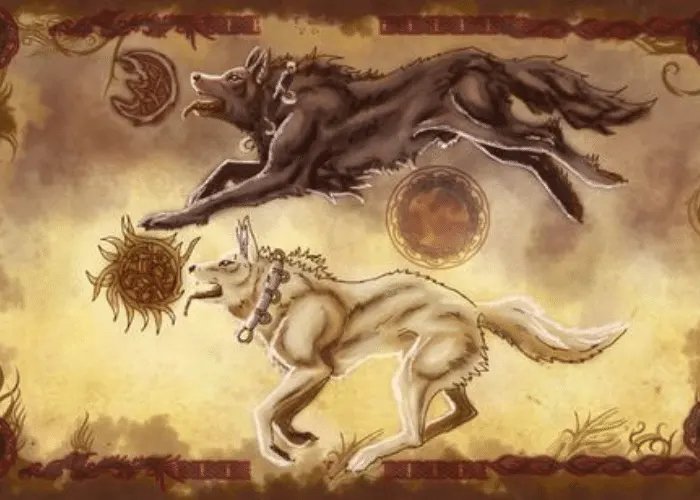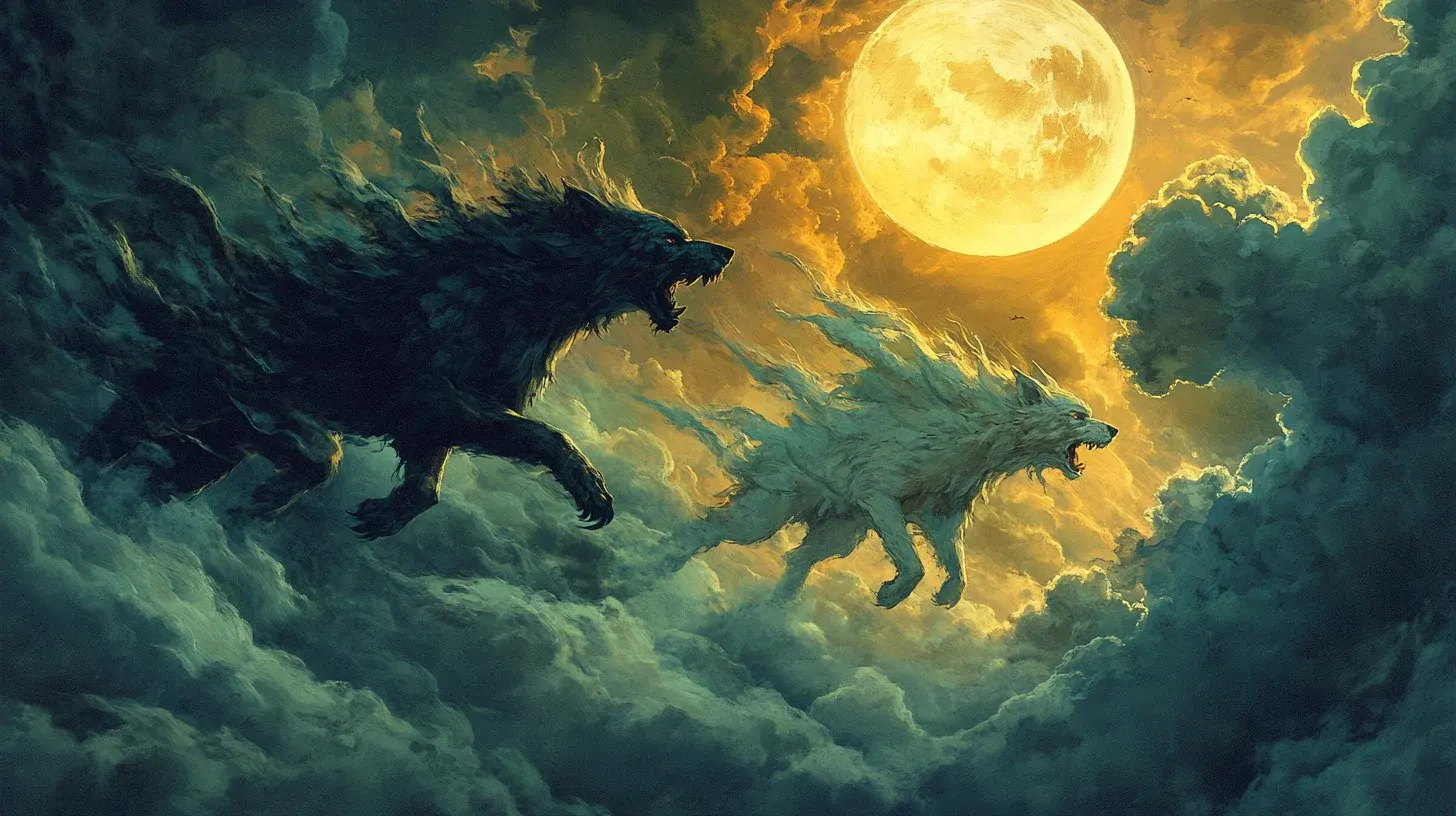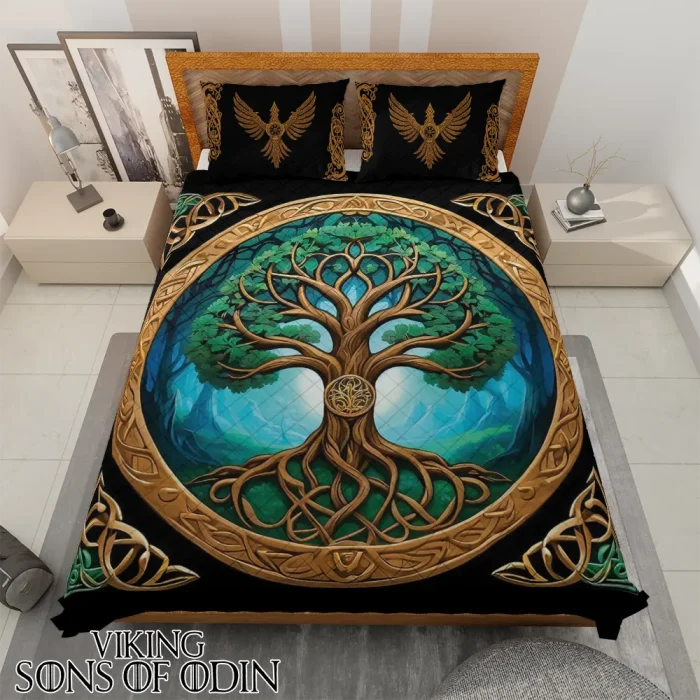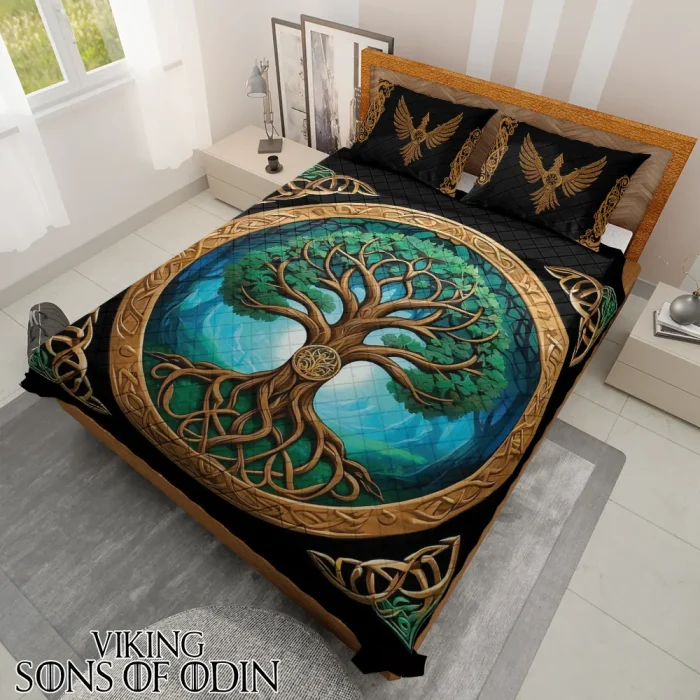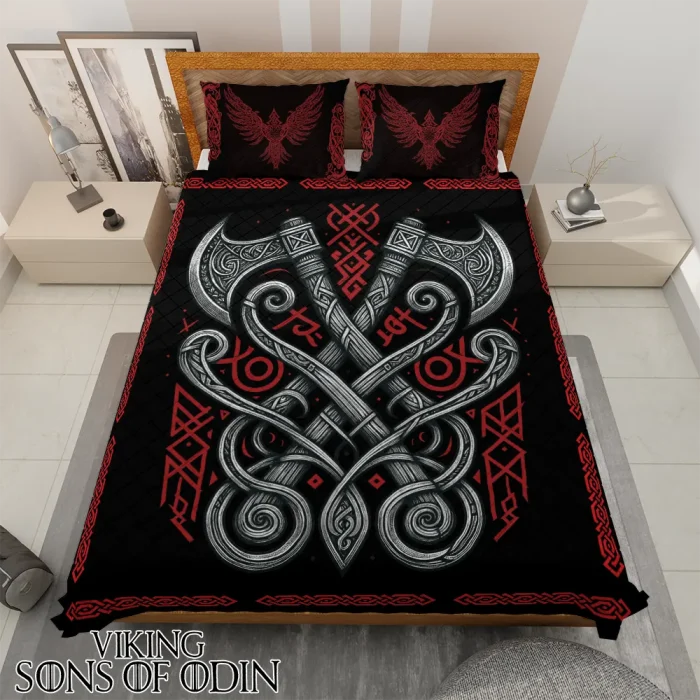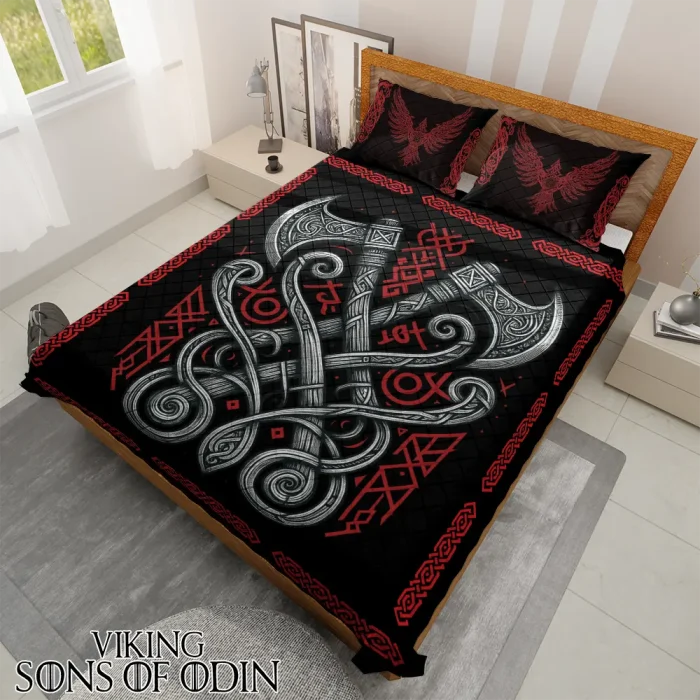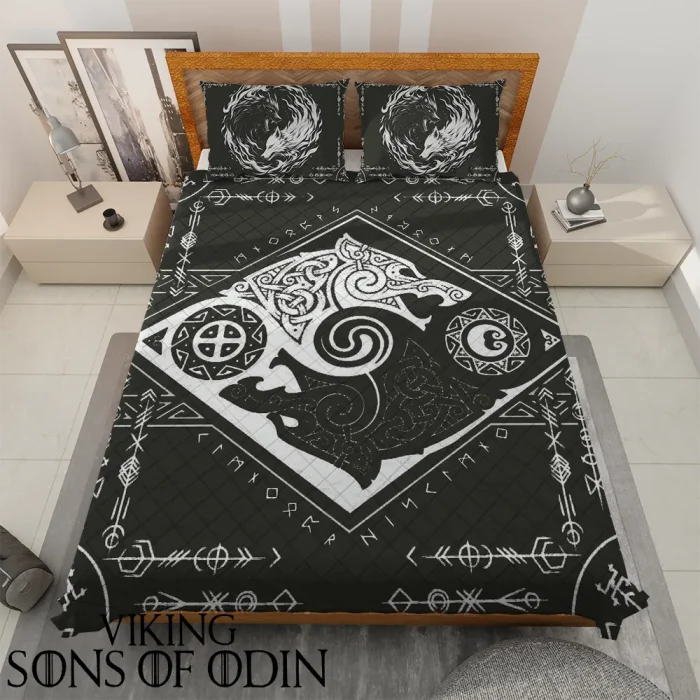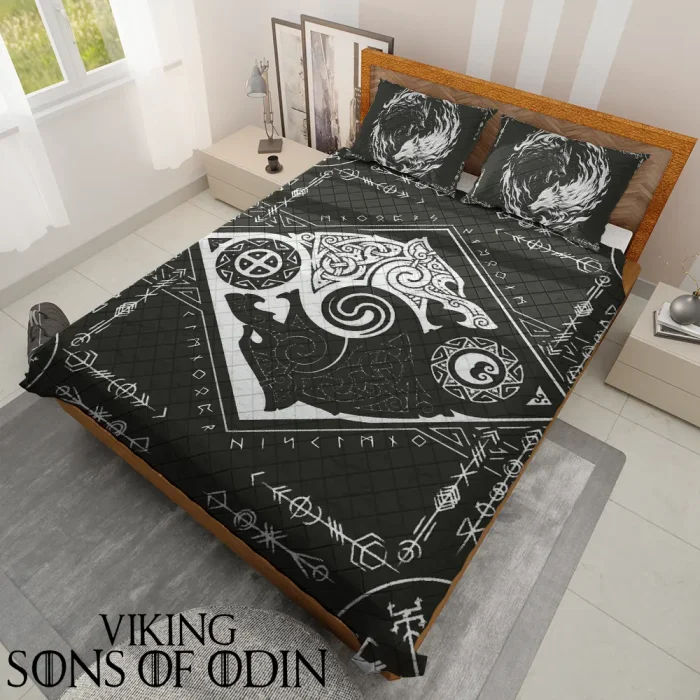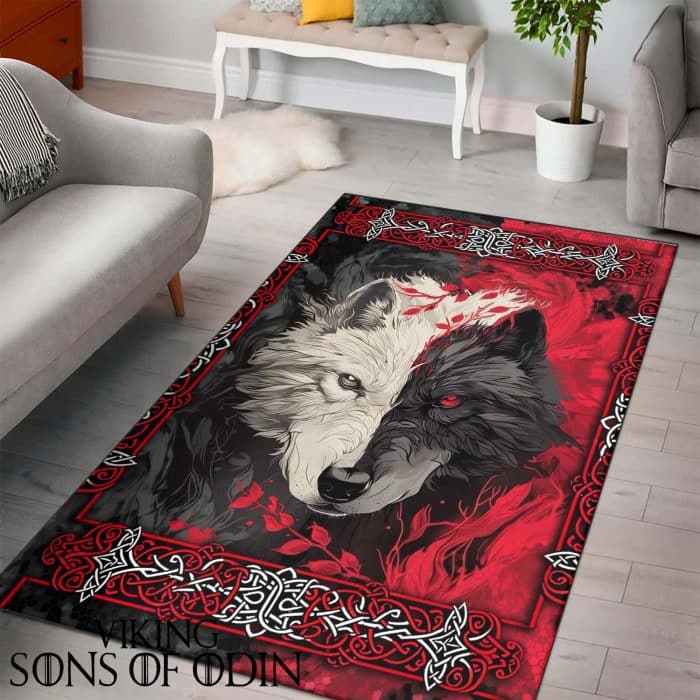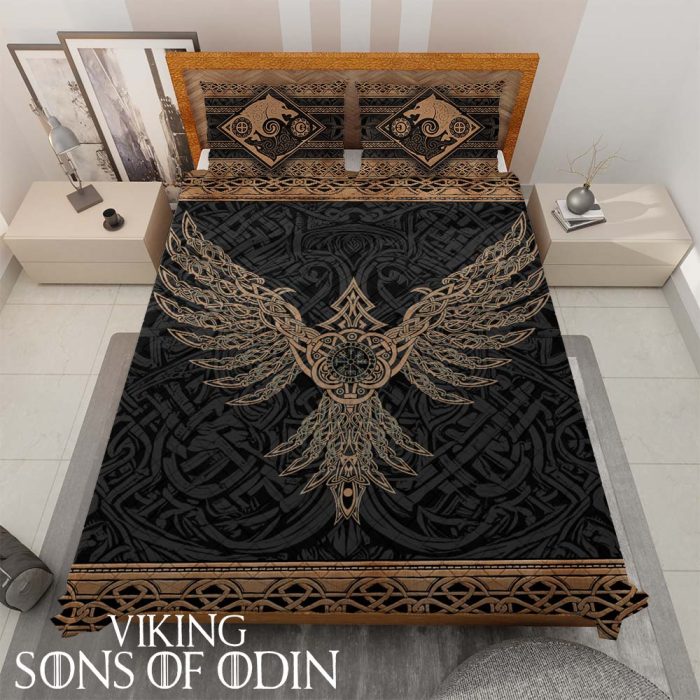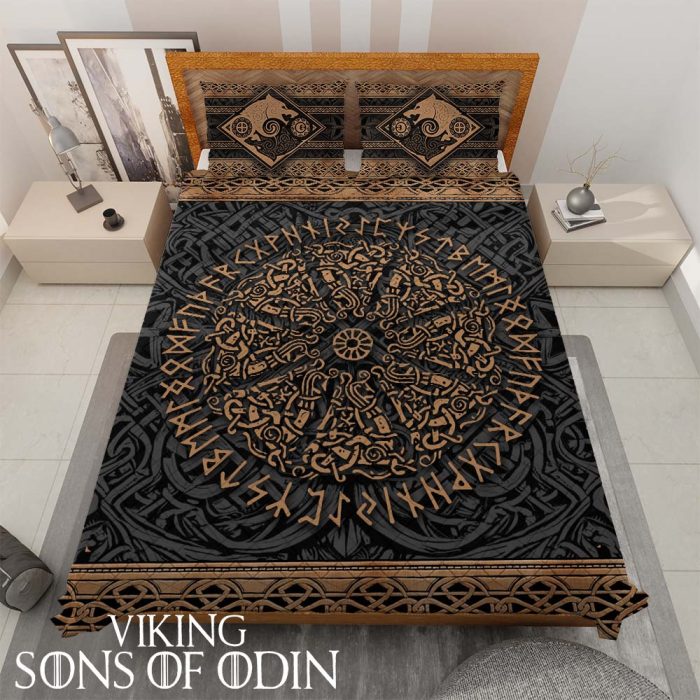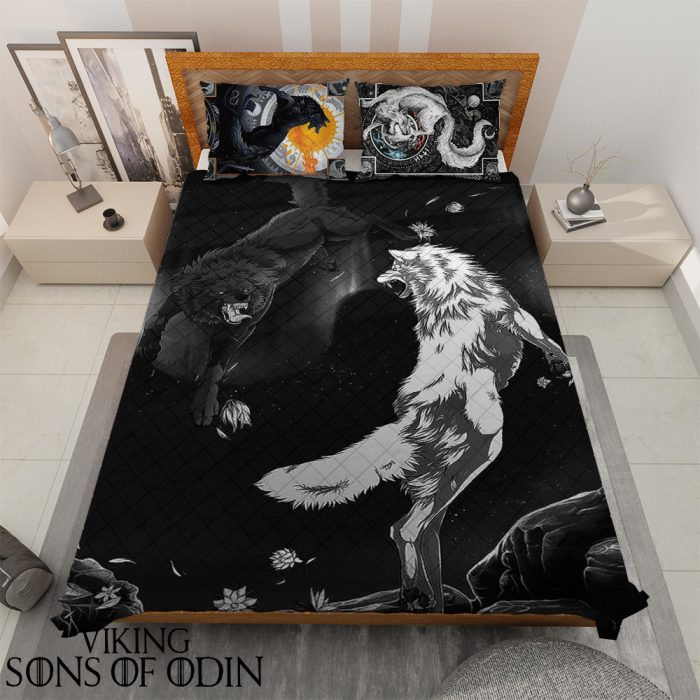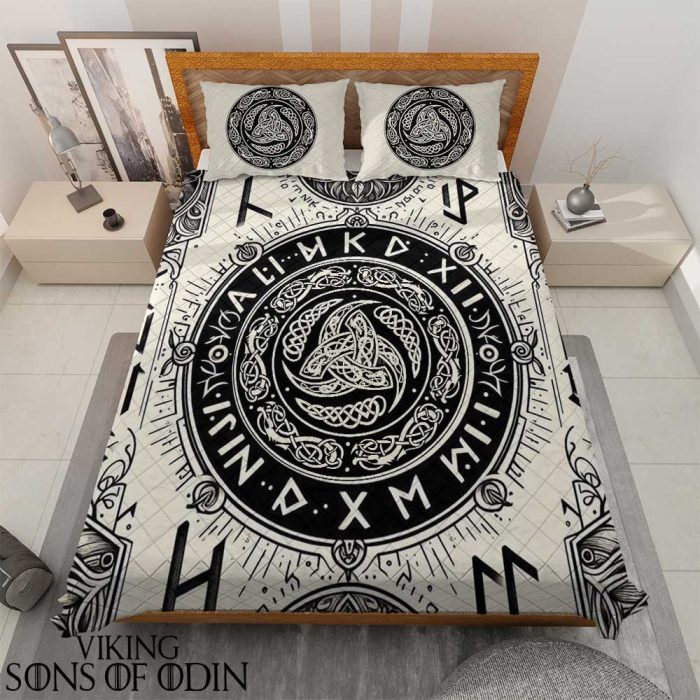Nordic Discovery, Viking
Hati and Skoll The Wolves That Chase the Sun and Moon in Norse Mythology
Have you ever wondered what causes solar and lunar eclipses? In Norse mythology, the answer lies in the eternal chase of two colossal wolves Hati and Skoll. These fearsome creatures symbolize darkness and disruption, as they pursue Sol (the Sun goddess) and Mani (the Moon god) across the sky.
Their myth is more than an explanation of celestial phenomena it is a profound allegory for the cosmic struggle between light and darkness, order and chaos. In this article, we’ll explore their origins, their pursuit, their connection to Ragnarok, and their enduring legacy in both ancient and modern culture.
Who Are Hati and Skoll? Origins and Relationship
Origins
Hati and Skoll are often described as the sons of Fenrir, the monstrous wolf destined to kill Odin during Ragnarok. Their mother is believed to be a jotunn (giantess), reinforcing their fearsome lineage.
This bloodline, stemming from chaos and destruction, establishes their role as bringers of disorder in the Norse cosmos.
Name Meanings
- Hati means “He Who Hates” or “Enemy.”
- Skoll means “Mockery” or “Treachery.”
These names highlight their antagonistic roles, representing threats to harmony and the natural order.
Relationship
Hati and Skoll are often portrayed as siblings or close kin. Together, they work in relentless coordination:
- Hati chases Sol, the Sun.
- Skoll chases Mani, the Moon.
Their bond is one of eternal pursuit — a cosmic hunt that brings tension to the sky each day and night.
The Chase of the Sun and Moon
Sol and Mani
In Norse myth, Sol is the goddess who drives the chariot of the Sun, while Mani is her brother who guides the Moon. They ride across the sky, pursued endlessly by Hati and Skoll.
The Eternal Hunt
The wolves race after their celestial prey without rest. On rare occasions, they draw close enough to bite — this is when eclipses occur:
- A solar eclipse signals Hati’s near capture of Sol.
- A lunar eclipse signals Skoll’s momentary victory over Mani.
Symbolic Meaning
This endless chase represents:
- The struggle between light and darkness.
- The cyclical nature of time.
- The inevitability of cosmic imbalance.
The gods themselves are powerless to stop the wolves, illustrating the Norse belief in fate and the limits of divine control.
Hati and Skoll in Ragnarok
Omens of the End
The myth foretells that when Hati and Skoll finally catch and devour Sol and Mani, the sky will go dark:
- The world will plunge into eternal night.
- This marks the beginning of Ragnarok, the Norse apocalypse.
Role in the Final Battle
While not frontline warriors, their actions signal the collapse of cosmic order. With no Sun or Moon to light the realms, chaos reigns, and the gods prepare for their final battle.
The wolves’ victory is short-lived — their success is tied directly to the world’s doom.
Influence and Legacy
In Norse Cosmology
Hati and Skoll represent the uncontrollable forces of nature. To ancient Vikings, they explained celestial events while reminding mortals of life’s unpredictability.
Their myth reinforced the idea that even gods are subject to fate.
In Modern Culture
The image of Hati and Skoll continues to captivate:
- In video games like God of War: Ragnarök, they are reimagined as cosmic beasts with deep lore.
- In fantasy art and literature, they symbolize primal fear and the eternal chase.
- As tattoo symbols, they embody chaos, transformation, and inevitability.
Their legend remains a powerful metaphor in modern storytelling.
Conclusion
Hati and Skoll are far more than mythic wolves. They are symbols of darkness, inevitability, and the cycle of destruction and renewal. Their pursuit of the Sun and Moon reminds us that even the brightest lights can be chased by shadow.
Their tale teaches acceptance of fate, awareness of natural cycles, and the profound impact of ancient stories on our understanding of the universe.

